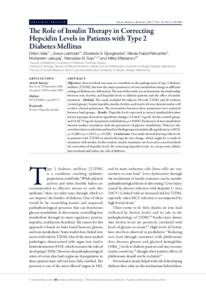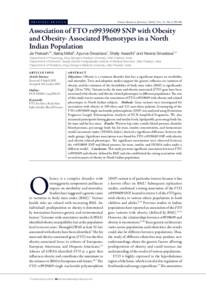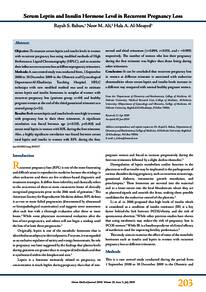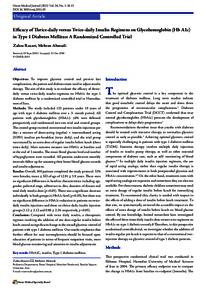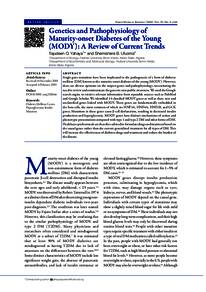Document
The role of insulin therapy in correcting hepcidin levels in patients with Type 2 diabetes mellitus.
Identifier
DOI 10.5001/omj.2017.37
Contributors
Leshoski, Jovica., Author
Gjorgievska, Elizabeta S., Author
Petrushev, Nikola Hadzi., Author
Jakupaj, Muharrem., Author
Sopi, Ramadan B., Author
Mladenov, Mitko., Author
Publisher
Oman Medical Specialty Board.
Gregorian
2017-05
Language
English
English abstract
Objectives: Iron overload can cause or contribute to the pathogenesis of type 2 diabetes mellitus (T2DM), but how the major parameters of iron metabolism change in different settings of diabetes are still unclear. The aim of this study was to determine the relationship between iron, ferritin, and hepcidin levels in diabetic patients and the effect of insulin treatment. Methods: The study included 80 subjects, 60 with T2DM and 20 without (control group). Serum hepcidin, insulin, ferritin, and iron levels were determined as well as other clinical parameters. The associations between these parameters were analyzed between both groups. Results: Hepcidin levels expressed as mean± standard deviation between groups showed no significant changes (14.4±6.7 ng/mL for the control group, and 18.4±7.9 ng/mL for patients with diabetes, p = 0.069). Parameters of iron metabolism showed modest correlation with the parameters of glucose metabolism. However, the correlation between ferritin and insulin in both groups was statistically significant (p = 0.032; ρ = 0.480 vs. p = 0.011; ρ = 0.328). Conclusions: Our study showed that hepcidin levels in patients with T2DM on insulin therapy do not change, which might be a result of treatment with insulin. In this context, insulin treatment can be used as a novel method for correction of hepcidin levels. By correcting hepcidin levels, we can prevent cellular iron overload and reduce the risk of diabetes.
Member of
Resource URL
Category
Journal articles

